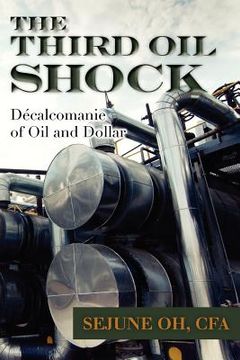Reseña del libro "the third oil shock (en Inglés)"
-A book that looks at the possible upcoming oil shock and dollar shock from the perspective of a fund manager- What will be the course of oil price in the future? We should be prepared for a third oil shock. The oil price that rose to $140 a barrel in 2008 plummeted after the Lehman Brothers crisis, and rebounded to one hundred dollars. As Tunisia's Jasmine Revolution spread across the Middle East and North Africa in 2011, the oil price rose because of the political unrest the antigovernment protests brought. In the first half of 2012, the Iranian Revolution also acted as a fear factor and put pressure on increasing the oil price. Afterward, financial crises emerged in European countries, especially Greece and Spain, and oil price became weak. How will the oil price change in the future? Oil production is concentrated in a few certain countries. As some of these countries are politically and financially unstable, a problem often occurs from the supply side of oil. On the other hand, oil-consuming countries are geographically far away from these countries, and usually are highly dependent on oil. Furthermore, some transportation routes occupy a high proportion of oil trade. If this is interlocked with production problems, the ripple effects will be great. For example, the Strait of Hormuz is located between Iran and Oman. If this strait is blocked, approximately 20 percent of worldwide oil trade will have a problem. The Strait of Malacca is located between Indonesia, Malaysia, and Singapore. This is an important gateway to Asia, and 15 percent of worldwide trades of oil are conducted through this route. Like this, there exists an imbalance of oil supply and demand. The psychological influence that alternative energy sources, such as nuclear energy, have on oil price can't be ignored. In March of 2011, an accident occurred in which radiation leaked from the Fukushima nuclear power plant because of an earthquake in Japan. Afterward, animosity toward nuclear power plants built up and movement against nuclear power plants occurred. As alternative energies, such as solar and wind, aren't yet efficient, breaking away from the efficient nuclear power may result in an increase in oil dependence. And if the oil price becomes unstable, it could have the effect of eliminating the upper limit. Most books on oil seem to have been written by people who have worked or still work in the oil industry. Writings of scholars or journalists in the related fields can be seen every now and then. As a fund manager, I would like to interpret the past, considering both the oil and the dollar through the eyes of a financier, and suggest a new point of view. I will look at the interests of each country and reinterpret the history of oil and the dollar with the Oil-Dollar Composite Index. In Part 1, the process how the oil majors developed through competition and cooperation, and the oil-producing countries' acknowledgment of their own power, will be dealt with. Beginning with the rise of the US in the Middle East, nationalism emerged in the oil-producing countries, and power shifted from the oil majors to the oil-producing countries, which appeared as a result in the first and second oil shock. In Part 2, history will be reinterpreted considering both oil and the dollar. The past will be inspected with the Oil-Dollar Composite Index, and the dollar's role will be reilluminated in the interpretation of the history of oil. The winners and losers of the oil shock followed by the dollar shock will be shown. In Part 3, the oil price is understood not through supply and demand, but through the interests and balance of power of the countries. If we can understand the pending issues with the wisdom gained in Part 1 and Part 2, we can predict the direction of the oil price.

